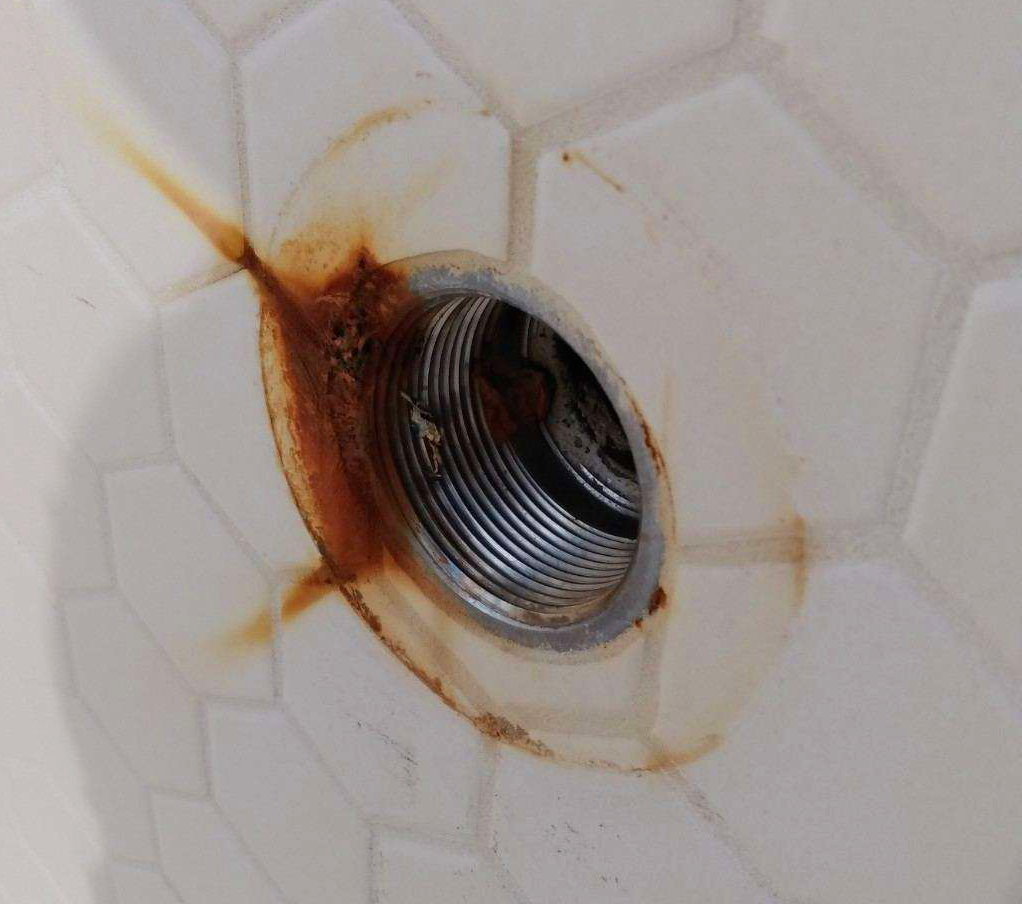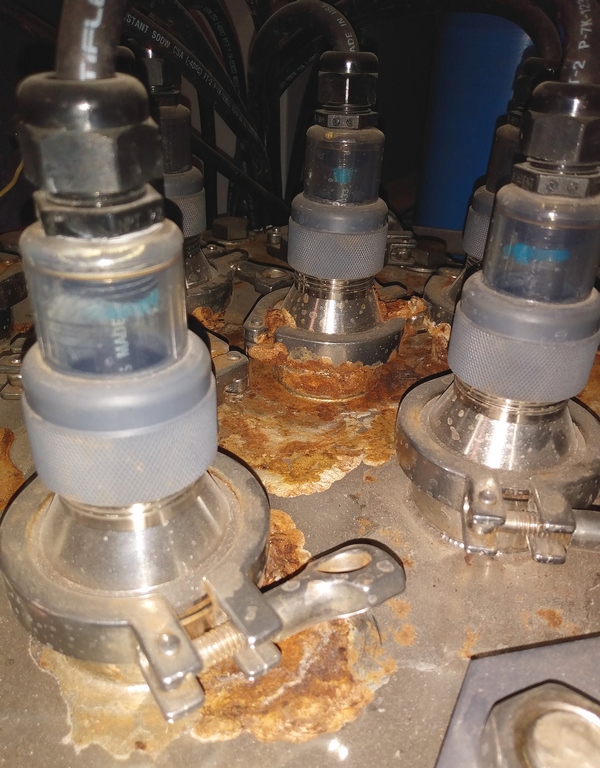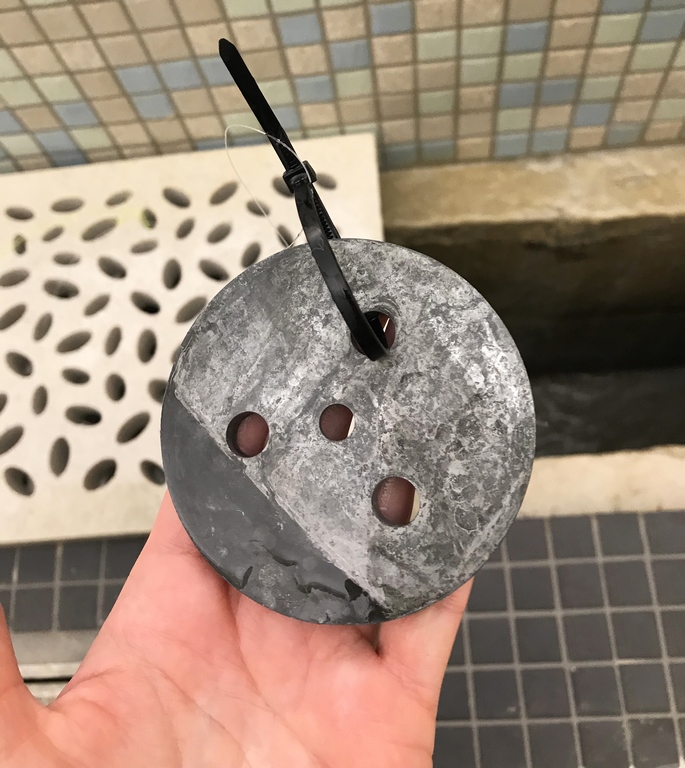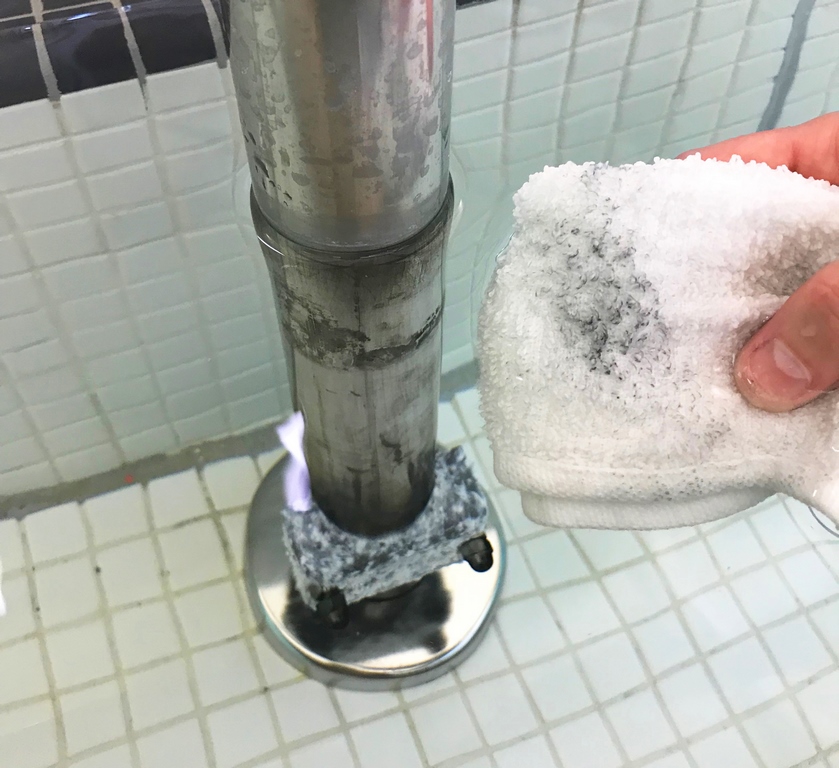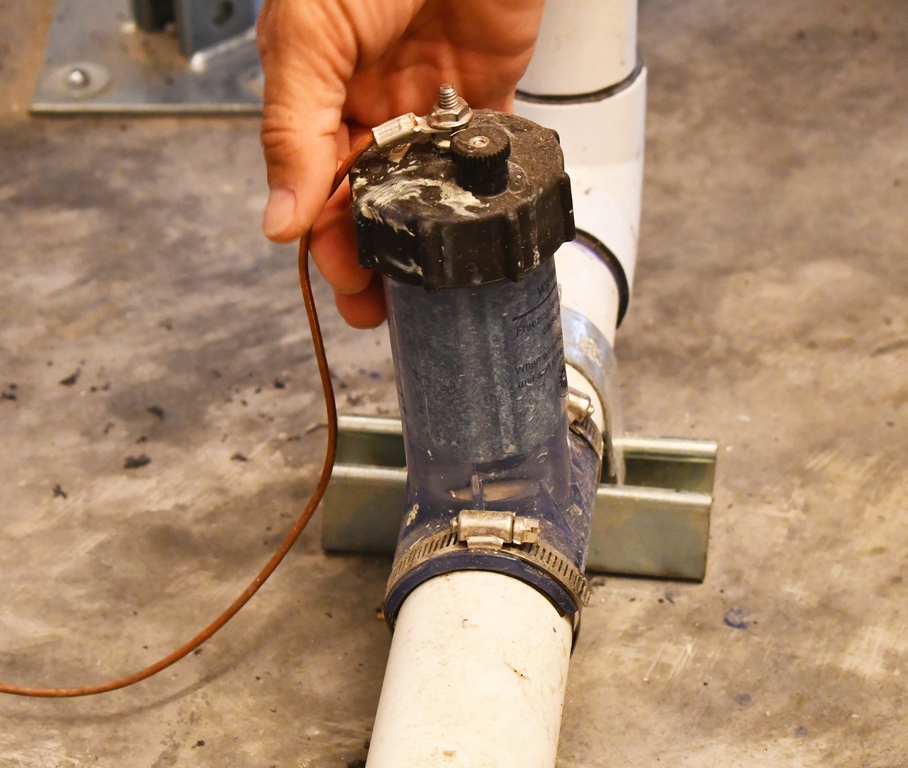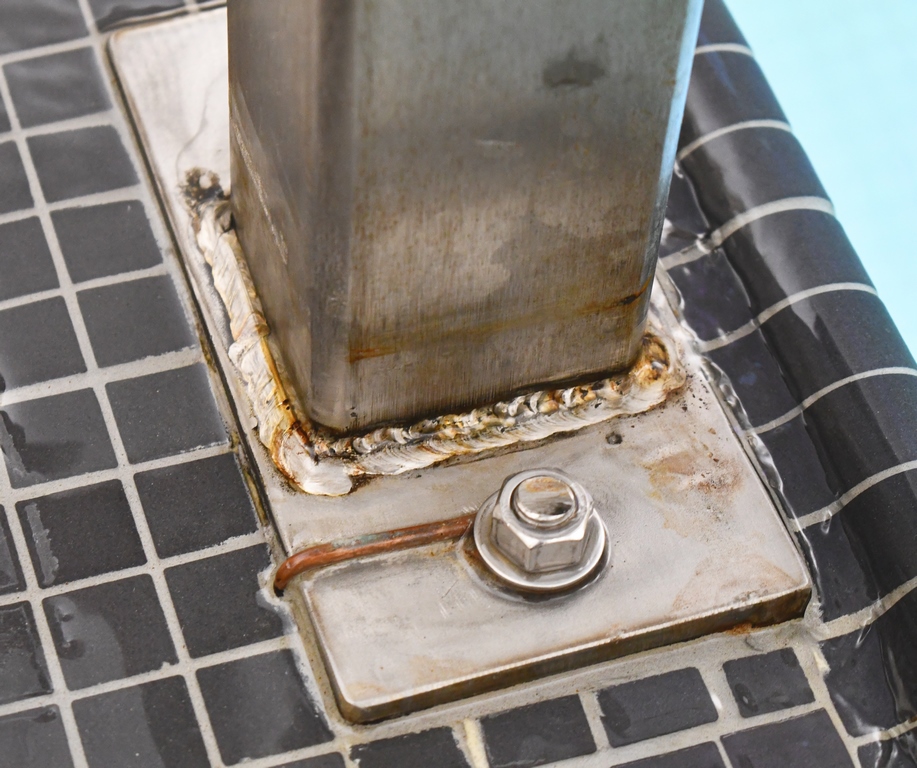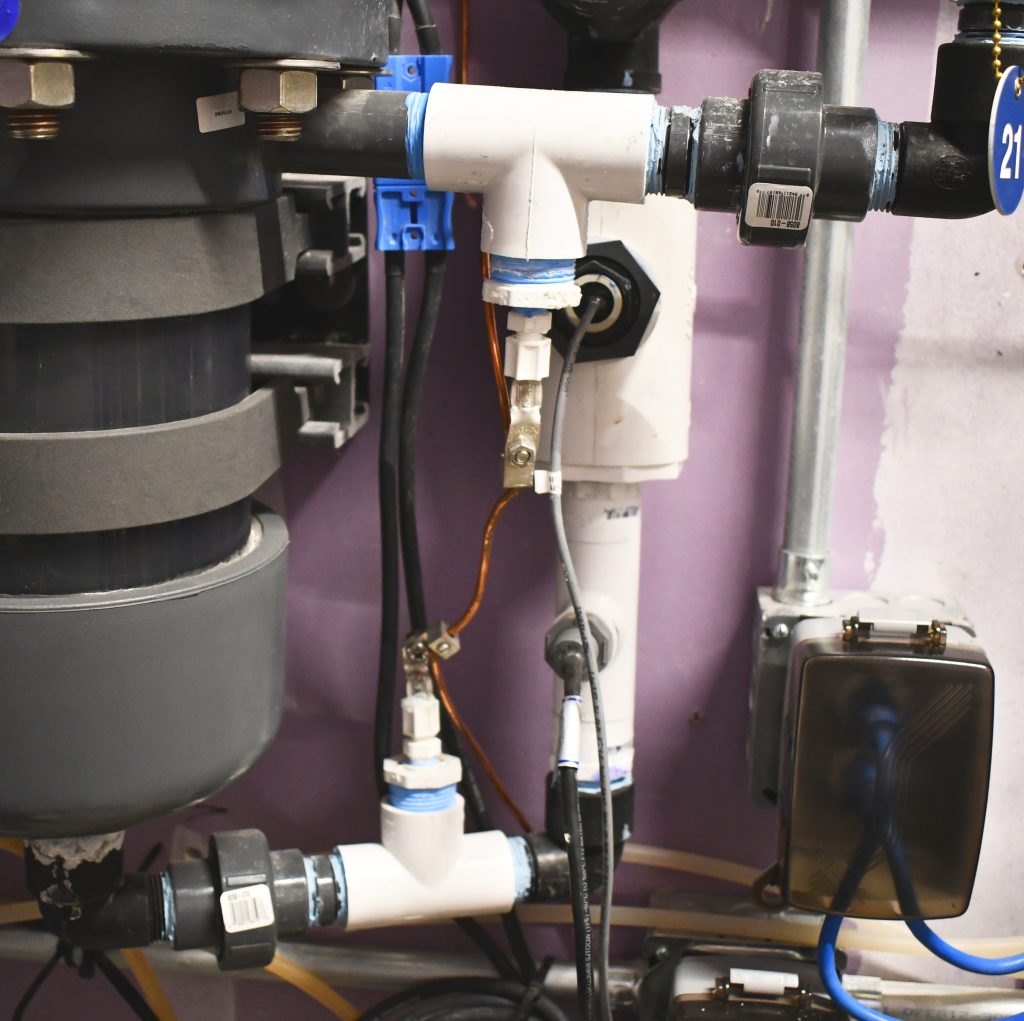Investigating Corrosion
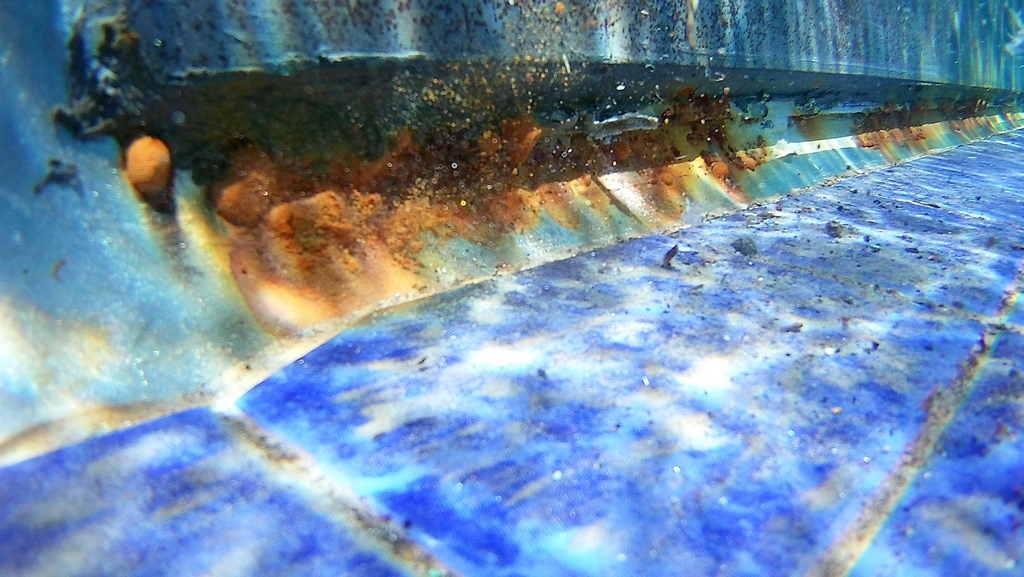
Corrosion in swimming pools can present something of a mystery, explains Jeff Freeman and Mark Holden, and that is especially so if all the possible causes are not taken into account. After years of investigation, the pair discovered a set of corrosion-related issues that are pervasive, as well as sometimes challenging to identify and decipher.
By Jeff Freeman & Mark Holden
It’s probably fair to say that most people in the watershaping industry know what corrosion looks like, yet many do not realize the spectrum of possible causes. Without a complete understanding of the complex set of phenomena known as corrosion, many will typically gravitate toward a familiar diagnosis, such as imbalanced water chemistry or excessive sanitizer levels.
A big surprise to many industry professionals is that all problems cannot be corroborated by using a standard testing kit. Case in point: back in August 2016, we published a provocative story on this subject in AQUA Magazine, while working with Eric Herman, who was then senior editor at the publication. The piece covered a case study of a failed stainless steel pool installation in a high-rise building, in a major metropolitan area on the east coast.
The upshot was that we came into the project to troubleshoot severe, and, at the time, inexplicable corrosion problems in a pool that needed an immediate solution. After lengthy investigation, and sometimes heated discussions with others involved with the pool and property, we eventually concluded that the problem was stray current causing electrolytic corrosion of basically the entire pool, which was almost visibly falling apart in real time and leaking into the building in which it was installed — on the 6th floor of a 30-story building.
The article garnered a great deal of attention in print and online; and, in the years since, we’ve been asked to render our opinions on a number of other similar situations. Through those detailed investigations, we’ve learned that our findings in that initial project may not be exactly common per se, but it is happening in places where stainless steel pools are installed in buildings above grade. In addition, we have found this happening to in-ground concrete pools.
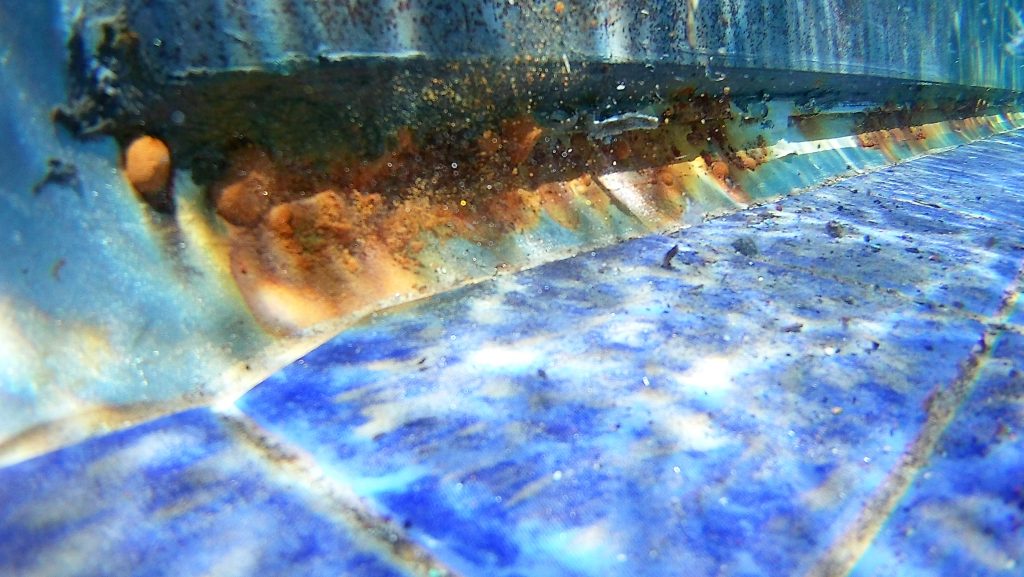
HISTORY LESSONS
In the broad view, this is a classic example of the pool industry being slow to accept technical knowledge that has long been accepted by other industries. It’s not the first time. Professionals who have been in the industry many years probably remember when pumps had open-faced impellers and all pool plumbing was two-inch diameter. The status quo changed because of improved products and the spread of a more progressive mindset for implementing those products based on advanced design practices.
Today, we know that a three-horsepower pump will not operate effectively on two-inch plumbing. The lesson worth remembering is the dramatic evolution in thinking, especially when looking at how metal components react to complex environments in which they are installed.
Fact is, corrosion is real and much more complex than most people in the industry realize and now is the time to accept that fact and adjust accordingly. That means looking at some things differently. Evaluating swimming pools from the perspective of a pool professional, we often fail to look at the setting in which these recreational waters are placed. Wholistic site analysis opens our vision to the ever-growing complexity of the building sites where we are working. New factors can influence our design choices when considering metal-based elements, like stainless steel pools or even handrails.
As we’ seen several times in recent years, these failures do happen, so in response we have targeted our work in this area to detect the source of the problems. Our goal is to provide remedies to the symptoms and, where possible, identify the root causes themselves.
WET METALS
Conductive metals exposed to swimming pool water can raise potentially serious concerns: stray current, EMF, highly corrosive water chemistry, improper equipotential bonding, and a whole host of other minor maladies can come into play. Sometimes the source of corrosion cannot be found or eliminated. When that occurs, a comprehensive cathodic prevention (CP) protocol is needed.
The science of corrosion and oxidation of metals is much broader than most people in the aquatics industry are aware. Between naval seafaring vessels, oil refineries, food and drug manufacturing, utility services and aeronautics – industries that have all grappled with corrosion issues – there is a wealth of scientific research and analysis that has led to the modern marvels that we all live with today, and corrosion, or the avoidance of it, is part of all those industries.
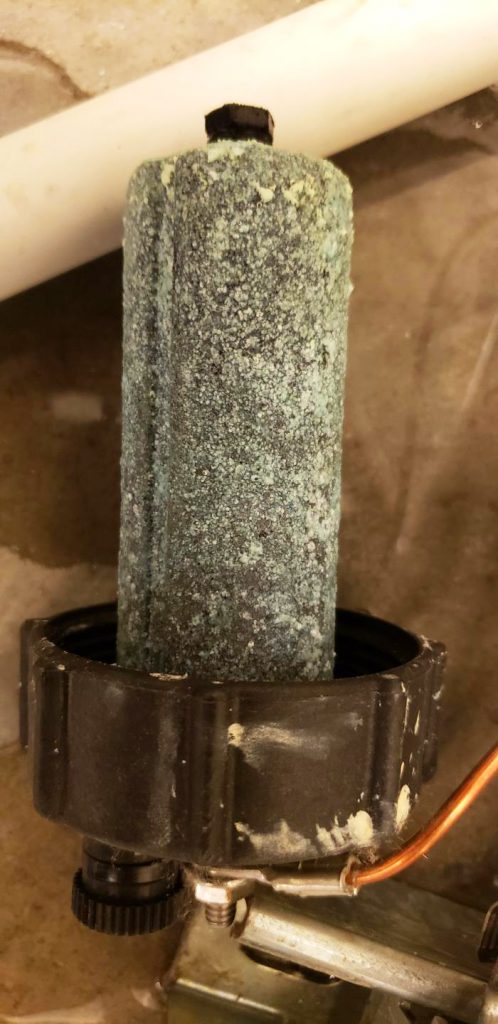
Think about all the metal components that we use in water today? Stainless steel (for pool shells, hand rails, UV sterilizers, etc.), brass, bronze, aluminum, carbon steel, and other minor metals can all be found in, or around, recreational water. It’s in our equipment, the rebar in the shells and decks, formed into light fixtures and even in our electrical networks as copper, aluminum wire and circuit breakers.
Our firm has developed a library of scientific findings, testing techniques and engineering standards that allows us to identify the compromised areas of a project, pinpoint the causes and eventually provide a rehabilitation plan for implementation by contractors.
Our findings have shown serious influxes of current coming from project sites and buildings into water environments. By design, NEC Article 680 is supposed to help us to handle this; but, the code provides guidance for human safety, but is deficient in addressing metal component protection. Sometimes regulations are counterproductive in this arena. They focus on the pool and its systems, failing to address stray current emanating from outside sources.
Safety of bathers is our first concern, but quickly afterwards we make any degradation of material our next focus.
Sometimes these problems are adjudicated within a litigation or arbitration case. Regardless of the legal resolution, things need to be repaired and/or replaced. One type of situation we often encounter is when the repair of a vessel is more expensive than replacement due to the potential legal liability that the new fabricators/installers will be forced to carry.
Clearly the best solution is to prevent corrosion in the first place, but whether your taking steps in a new installation to head off corrosion before it starts, or remediating an existing problem, understanding why it happens is the starting point.
FIELDS OF ENERGY
One form of stray current we test for is electromagnetic fields (EMF). This acronym has lately been popularized by modern sci-fi films, but it is the EMF that exist around all things, including ourselves that can influence corrosion. (Nikola Tesla envisioned it being transmitted from tower to tower, which is now America’s method of cellular communications.)
EMF comes from mostly energy generating or transferring devices and can flow through open air to other conductive materials. So, an elevator lift mechanism, generator or air conditioning component can shed EMF into the bonding network of a pool.
Other stray current can come from the grounding network, which is required by law. Our testing has shown that the grounding network of a pool’s components can allow stray current to enter the equipotential bonding network unintentionally, and allow current to spend time bouncing around the water in a pool or feature. It will seek a conductive source and start the process of electrolytically destroying the metal materials.
The entire point of a bonding network is to equalize stray current so that it does not ‘flow’ in a direction. The grounding connection is fighting the purpose of the bonding network.
We even see electrical contractors purposely connect bonding and grounding networks, thinking that it will help. This is allowable by code but it does not help our goals. We recommend that these connections are severed immediately.
If you are witnessing accelerated corrosion on metal components in the pool — or the entire pool shell in the case of stainless-steel pools — the first step is to simply acknowledge that stray current might be the possible culprit. That simple realization puts you far ahead of others who are not open to the possibility.
It’s basic commonsense: if you miss the root cause of the problem because it’s not part of your thought process, there is literally no way to fix it in an existing pool, or prevent it in a new one.
Certainly, existing projects pose hurdles because sometimes it is very hard, impractical or impossible to change the surrounding elements of a body of water. Sometimes there is nothing you can do about the source of stray current. For instance, digging up a project site or removing the HVAC system from a building is not practical.
Note: Chlorides present in water do increase the conductivity of the water and can be corrosive at high levels. We’ve found that attributing corrosion to chloride content has become a knee-jerk assumption for many people looking at corrosion problems, which means they often miss the root causes, which we’re describing here. We’ll examine this issue in a future discussion.
BASIC PROTECTIONS
When outside stray current influences cannot be located or eliminated, we must look internally to the mitigation of this unwanted current. If you cannot remove the source of the current, you can protect the metals from the damage incurred from exposure to it.
Cathodic Protection (CP) is the introduction of a less noble metal (zinc, magnesium, etc.) to a water system to allow the current to decompose it before the more noble metals (stainless steel, bronze, etc.)
There are two main forms of CP: active and passive. Active protection is the continuous sensing of stray current and introduction of the opposite polarity current to neutralize it. This is a common problem in naval vessels as the EMF coming from ship motors fluctuates based upon the current location of the vessel. It is also very expensive.
Passive protection is in the form of sacrificial anodes that are placed in contact with the metal in question and immersed in water. Stray current attacks these anodes and the desirable metals are left unharmed in theory. Sacrificial anodes are the best vitamin for a water-based environment where corrosion can occur due to stray current.
In the future, we will discuss the myriad of other attacks of metal in water through our future pieces that dive into the science and protection methods we all have at our disposal.
Jeff Freeman has been a leader and innovator in the water-quality industry for over 30 years. In addition to lecturing and guiding agency regulatory policy, he has dedicated his career to advancing the technology of water purification and sanitization. He is Certified Pool Operator (CPO) and has U.S. military certification for water environments. (jfreeman@waterarchitecture.com).
Mark Holden is a licensed landscape architect and contractor, a university-level instructor, writer and forensic expert in the water industry for over thirty years. His firm, Holdenwater in Fullerton, CA, addresses the design, engineering and forensics of water environments (holden@waterarchitecture.com).











